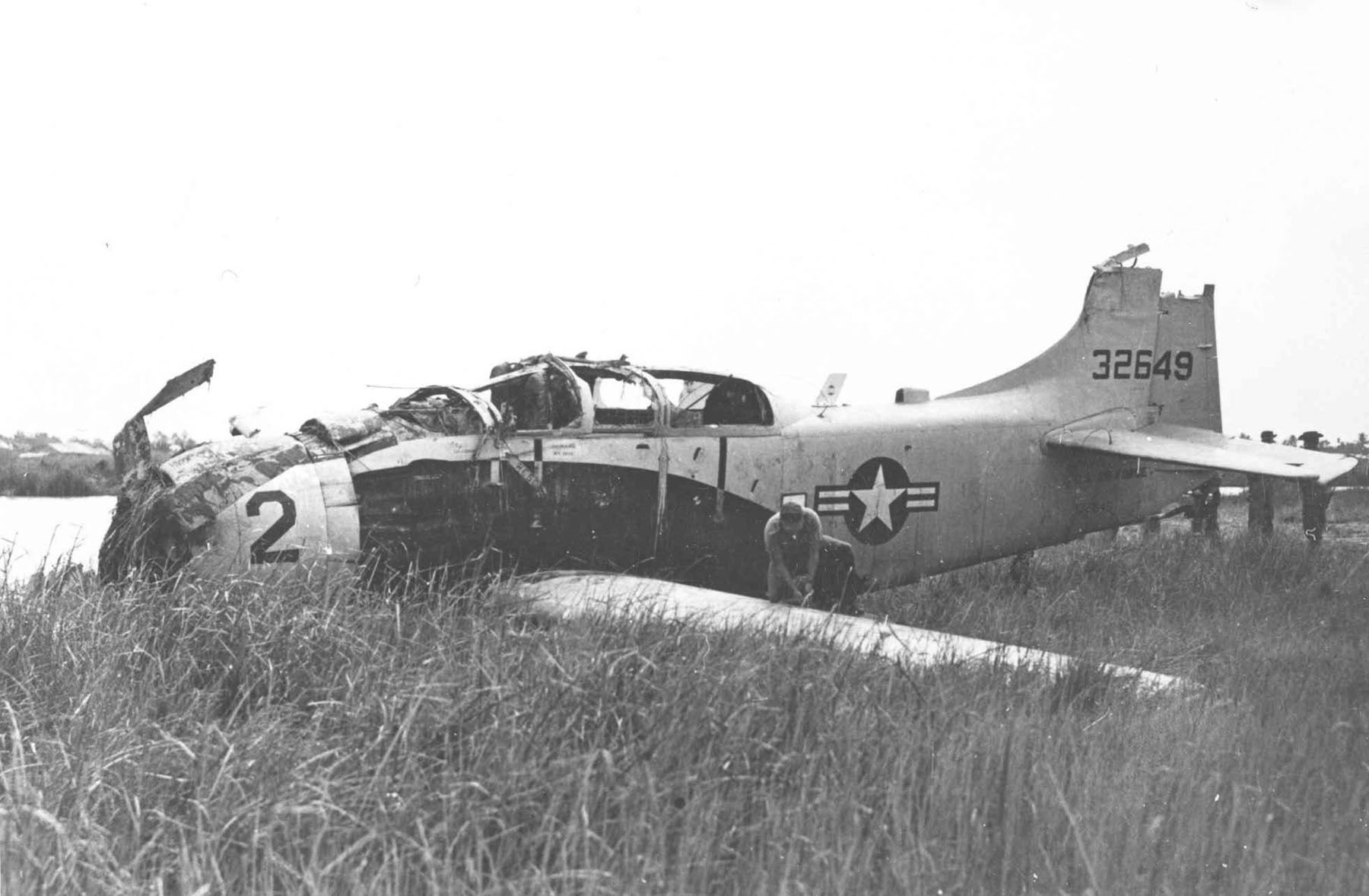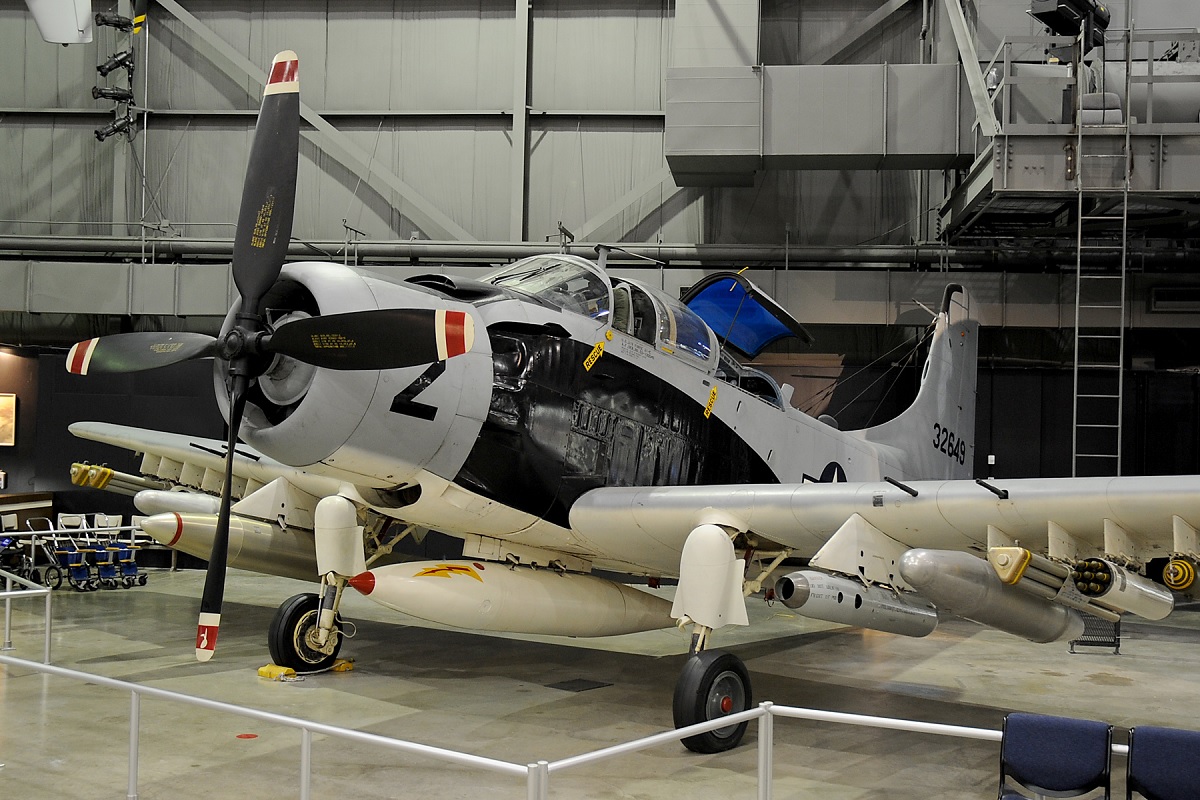During the Vietnam War, the Skyraider’s primary tasks included providing CAS to ground forces and protecting helicopters that were recovering downed airmen in hostile territory
The Douglas AD Skyraider, which was created for the U.S. Navy during World War II, nearly vanished before it had the opportunity to stand out during the Vietnam War. In the late 1950s high-speed, jet-age world, the Skyraider appeared to be a relic of a bygone era.
The Navy made the decision to replace it with jet aircraft despite the fact that it had performed admirably during the Korean War.
The Skyraider still proved effective in combating the communist guerrilla war being fought in Southeast Asia, where it played a significant role due to its capacity to carry a massive amount of weapons and remain on the battlefield for extended periods of time.

During the Vietnam War, this aircraft’s primary duties included providing close air support (CAS) to ground forces and safeguarding helicopters that were recovering downed airmen in hostile territory.
When the United States gave South Vietnam more military supplies and training to stave against communist forces in the early 1960s, the first Skyraiders made their way to Southeast Asia. The United States also sent ADs to the South Vietnamese Air Force (VNAF).
At Bien Hoa Air Base, U.S. Air Force (USAF) instructors began training VNAF pilots in 1961 while using Skyraiders with their tail hooks removed and VNAF markings. The USAF instructors gradually began flying combat missions over South Vietnam alongside the VNAF pilots.
The old Skyraider, which was given the A-1 designation in 1962, quickly earned the moniker “Spad,” alluding to the French fighter used in World War I.
In May 1964, two-seat A-1E USAF Skyraiders made their way to Bien Hoa Air Base. They belonged to the Hobo-calling 1st Air Commando Squadron, which later changed its name to the 1st Special Operations Squadron. Under the call letters Spad, Firefly, and Zorro, other USAF squadrons operated Skyraiders out of bases in South Vietnam and Thailand. Wherever they flew, the Skyraiders supported the insertion and extraction of special operations teams into enemy-held terrain along the Ho Chi Minh Trail or provided crucial CAS to ground forces and other missions like defoliant spraying.

However, the support provided to search and rescue (SAR) missions by USAF Skyraiders in Southeast Asia is likely what makes them most memorable. Operating under the call sign Sandy, the A-1’s prodigious firepower was complemented by its capacity to hover over a fallen Airman for a considerable amount of time. Until helicopters could rescue fallen Airmen, the Sandies delivered practically constant suppressing fire, but jet aircraft frequently had to depart an area for refueling or rearming.

Photo by U.S. Air Force
Source: National Museum of the U.S. Air Force


